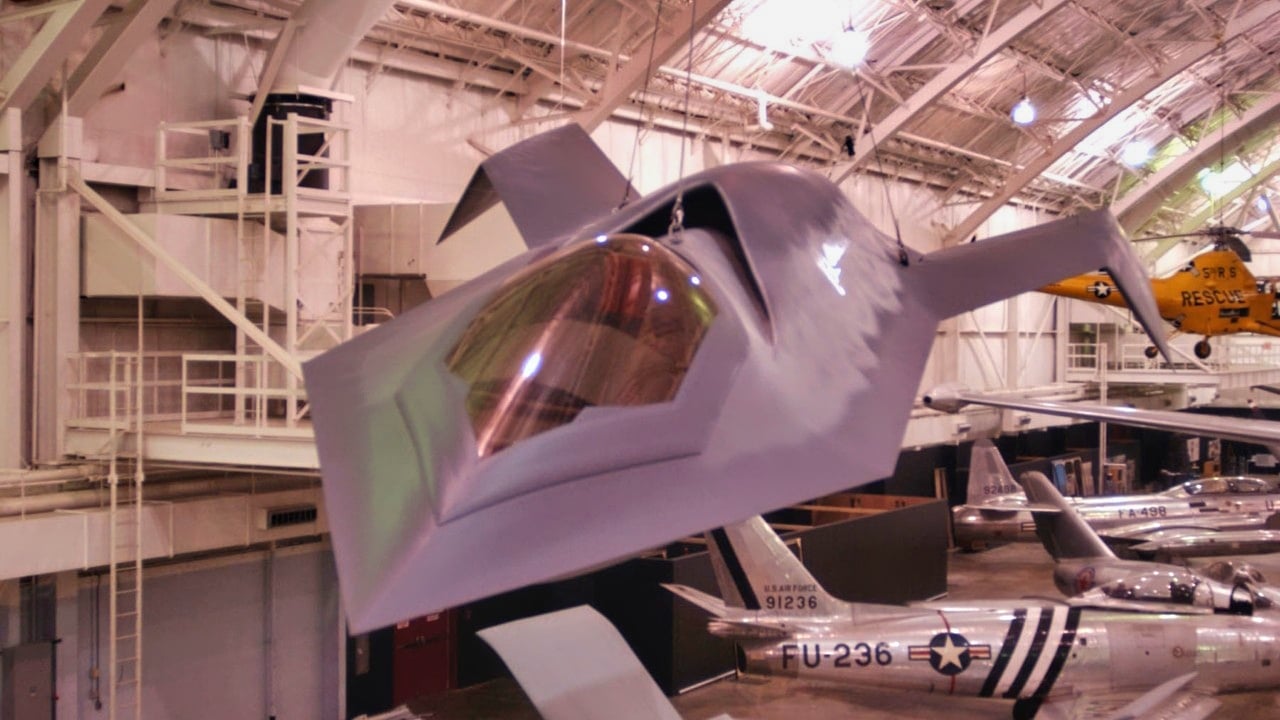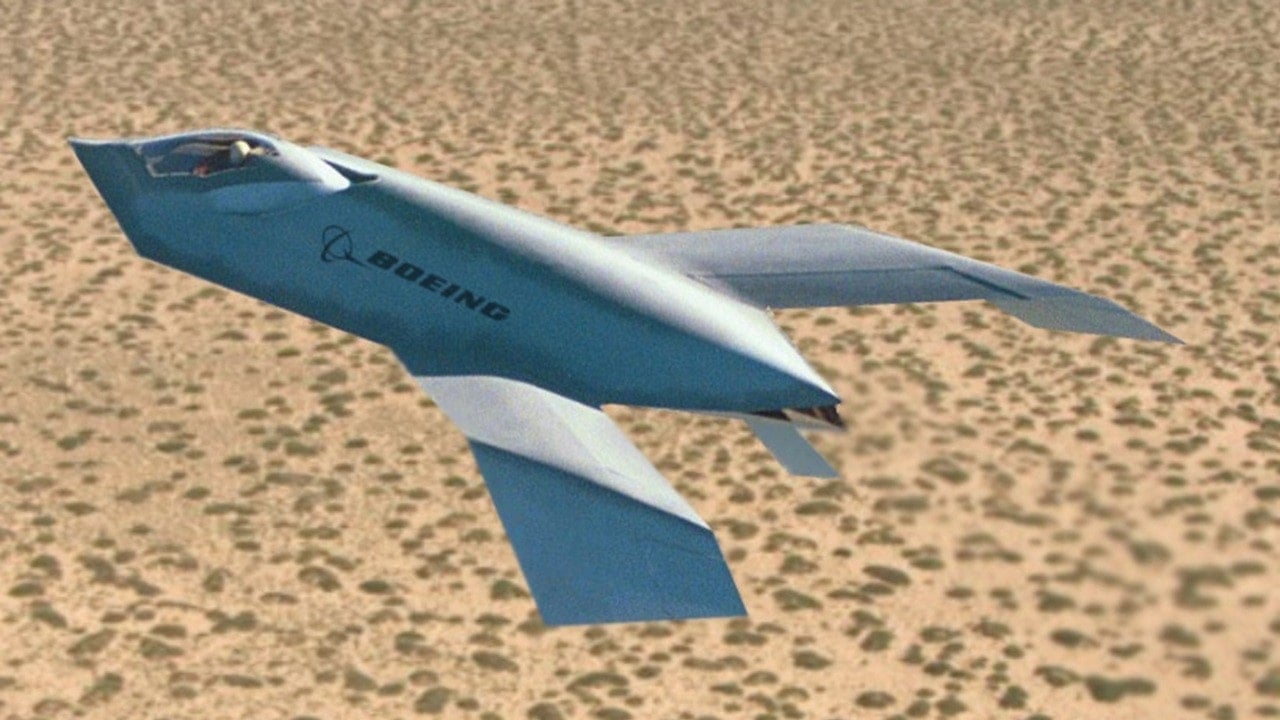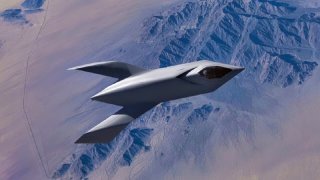Boeing YF-118G 'Stealth' Bird of Prey Was Just Lots of Amazing
The Boeing YF-118G, nicknamed the "Bird of Prey," was a stealth technology demonstrator developed by Boeing's Phantom Works in the 1990s. Like a Klingon spacecraft from Star Trek, it featured a distinctive diamond-shaped design aimed at minimizing radar visibility.
What You Need to Know: The Boeing YF-118G, nicknamed the "Bird of Prey," was a stealth technology demonstrator developed by Boeing's Phantom Works in the 1990s. Like a Klingon spacecraft from Star Trek, it featured a distinctive diamond-shaped design aimed at minimizing radar visibility.

-Built with cost-effective measures, including manual hydraulic controls and off-the-shelf components, the project cost around $67 million. Although not suited for combat due to its limited speed (approximately 300 miles per hour) and altitude capabilities (up to 20,000 feet), the aircraft served as a testbed for stealth technologies that influenced future models like the F-22 Raptor and F-35 Lightning II. After completing 39 test flights between 1996 and 1999, the program was declassified in 2002.
-The YF-118G now resides at the National Museum of the United States Air Force, symbolizing a significant leap in stealth aircraft development.
Boeing’s YF-118G was Amazing
Boeing’s Phantom Works once created a “Bird of Prey.” Sadly, it was not the Klingon spaceship from Star Trek. But it came as close as it could have for the 1990s. The Boeing YF-118G, that’s a mouthful, better known as the “Bird of Prey,” was given that title because of its visual similarity to the Klingon warship of the same name from the famous science fiction series.
What’s more, its stealth capability was the closest real-world analog to the Klingon cloaking technology that defined the Bird of Prey in the show.
The eggheads at Boeing’s legendary Phantom Works billed the project as a relatively low-cost endeavor, compared to other, higher-profile stealth programs, with Boeing investing around $67 million into the system.
One of the aspects of this project that was alluring to many observers was the fact that Boeing created it with the intent of cutting out the usual bureaucratic bloat, which they largely did.
The Specs
This bird’s diamond-shaped planform was instrumental in reducing its radar cross-section (RCS), thereby ensuring its stealthiness. It was built to minimize its radar visibility and other detection systems. Toward that end, its surfaces were meant to eliminate shadows.
Some rumors swirled around this extraterrestrial-looking warplane that the military was testing active camouflage, meaning that the aircraft’s surface would change color or luminosity to blend in with its surroundings.
Back in the 1990s, the military was still perfecting its stealth technology.

So, the YF-118G was designed to be a testbed for furthering and streamlining stealth technology. Even the engine intake was positioned to prevent radar signals from reflecting to the source. Many of the design schemes were ultimately put to work in future stealth planes as a result of this program.
Sadly for the Bird of Prey, its heavy focus on stealth detracted from its overall flight performance. The bird could reach an altitude of 20,000 feet and go about 300 miles per hour. This was acceptable for flying around the testing range.
As for combat operations, this warplane was wholly unsuited to such missions, which explains why no one ever saw or heard of these birds conducting combat operations, they simply flew too slow and low for their own good.
Most U.S. warplanes use fly-by-wire systems that increase the ease and handling of warplanes for pilots. Because of the costliness of such systems, given that the military never planned on using the Bird of Prey for anything more than testing, Boeing opted to employ manual hydraulic controls.
In a stunning move, too, Boeing abandoned its preference of using costly systems to support the craft. Instead, Boeing employed off-the-shelf components for the YF-118G, which only helped reduce the cost of each bird even more.
Having first taken flight in 1996, the YF-118G conducted thirty-nine test flights, with the program being rolled up in 1999. The tests were centered around the aforementioned stealth capabilities of the bird in various conditions. Lessons learned from these thirty-nine flights over three years played heavily into the future design of stealth planes, notably for the F-22A Raptor and the F-35 Lightning II, America’s premier stealth warplanes today.
What Happened to These Birds?
The Pentagon ultimately retired these birds, but not before declassifying their existence in 2002. The planes in question were simply too cool to keep hidden. The revelations about the YF-118G were a rare moment in U.S. history where the details of a highly classified black project were shared with the wider American public.
Indeed, the YF-118G is part of the National Museum of the United States Air Force.
A cool-looking craft with next-generation stealth capabilities, observers should not underestimate the importance of this bird. It pushed America’s understanding, and use, of stealth technology to new bounds. What’s more, the design of the bird itself helped Boeing’s engineers understand the role that airframe shape and design play in the overall stealthiness of a bird. These lessons learned continue to inform America’s military today when it comes to stealth planes.
The Bird of Prey was a plane of the future brought into the present. Its contributions will forever be remembered. That is likely why the military revealed its existence to the public.
Author Experience and Expertise: Brandon J. Weichert
Brandon J. Weichert, a National Interest national security analyst, is a former Congressional staffer and geopolitical analyst who is a contributor at The Washington Times, the Asia Times, and The-Pipeline. He is the author of Winning Space: How America Remains a Superpower, Biohacked: China’s Race to Control Life, and The Shadow War: Iran’s Quest for Supremacy. His next book, A Disaster of Our Own Making: How the West Lost Ukraine, is due October 22 from Encounter Books. Weichert can be followed via Twitter @WeTheBrandon.
All images are Creative Commons or Shutterstock.
From the Vault
Russia Freaked Out: Why the U.S. Navy 'Unretired' the Iowa-Class Battleships
Battleship vs. Battlecruiser: Iowa-Class vs. Russia's Kirov-Class (Who Wins?)


